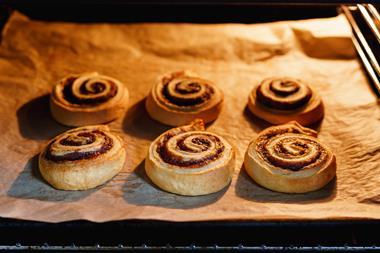Neil Goldman, managing director, of packaging supplier Colpac on the role of paperboard in bakery and food-to-go
PM Theresay May’s recent declaration of war on plastic waste has signalled the start of a 25 Year Environment Plan.
For some time now, retailers have been squeezing food packers to lower their costs, while pushing them to move away from plastic packaging in a bid to become more eco-friendly. However, as paperboard products tend to be more expensive than their plastic counterparts, retailers have wrestled between their eco-friendly conscience and cost.
Nevertheless, over recent years there has been a shift in demand, and supermarkets and packers of fresh bakery products and food-on-the go are looking at more sustainable packaging options, including paperboard and fibre content packaging.
The food-to-go market relies on a vast array of packaging formats to serve a multitude of fresh dishes. Essentially, packers demand packaging that is quick and efficient to use, while protecting and preserving the product within a predicted, or desired, timeframe. Also, the packaging needs to grab the customer’s attention.
So, while paperboard is slowly replacing plastic in certain areas, more is needed to educate packers on the benefits paperboard offers across its lifecycle – from manufacturing to retailing to consumption and recycling.
For example, paperboard was previously deemed unsuitable for food with a high water content, such as fruit and salad or dressings and sauces. Following years of testing in the wake of calls for plastic content to be reduced, paperboard material with suitable barrier layers is now a credible alternative for many applications.
Paperboard is far easier to customise by simple and economic print and construction design changes, which allow the pack to suit specific requirements, whether for regional, seasonal or promotional purposes.
While the argument for paperboard is strong, there is still a place for plastic packaging where paperboard alone does not offer the solution. Over a third of customers gauge the freshness of a product from its appearance, so packaging needs to offer excellent visibility. Here, a paperboard base and plastic film are the ideal combination to give customers the visibility they crave, and these can be readily separated to ensure each element is recycled correctly.
Food-to-go packers need to understand the variety of packaging material options available, so that they select the best packaging solution for their product and for the environment.





























No comments yet